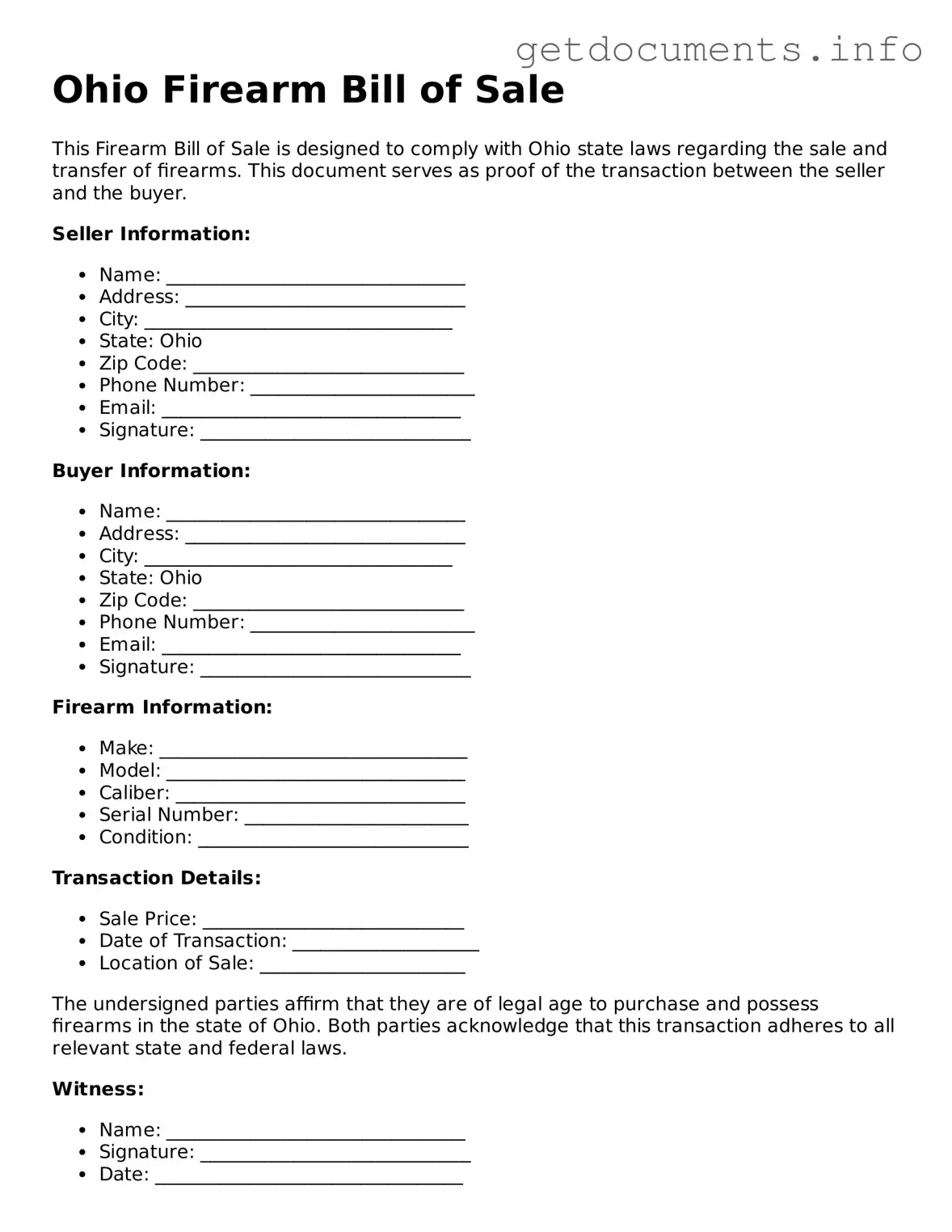In Ohio, the process of buying or selling a firearm involves more than just a handshake; it requires a clear and legally binding document known as the Firearm Bill of Sale form. This form serves as a crucial record of the transaction, detailing important information about both the buyer and the seller, including their names, addresses, and identification details. Additionally, the form captures specifics about the firearm being sold, such as its make, model, caliber, and serial number. By documenting these details, the Firearm Bill of Sale not only protects both parties involved in the transaction but also helps ensure compliance with state and federal laws regarding firearm ownership. Moreover, this form can provide proof of ownership, which can be vital in cases of theft or disputes. Understanding the significance of this document is essential for anyone looking to engage in the buying or selling of firearms in Ohio, as it lays the groundwork for a responsible and lawful exchange.
